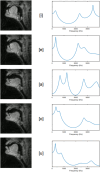Correlates of Vocal Tract Evolution in Late Pliocene and Pleistocene Hominins
- PMID: 40244547
- PMCID: PMC12058909
- DOI: 10.1007/s12110-025-09487-9
Correlates of Vocal Tract Evolution in Late Pliocene and Pleistocene Hominins
Erratum in
-
Correction: Correlates of Vocal Tract Evolution in Late Pliocene and Pleistocene Hominins.Hum Nat. 2025 Oct 10. doi: 10.1007/s12110-025-09501-0. Online ahead of print. Hum Nat. 2025. PMID: 41071508 No abstract available.
Abstract
Despite decades of research on the emergence of human speech capacities, an integrative account consistent with hominin evolution remains lacking. We review paleoanthropological and archaeological findings in search of a timeline for the emergence of modern human articulatory morphological features. Our synthesis shows that several behavioral innovations coincide with morphological changes to the would-be speech articulators. We find that significant reductions of the mandible and masticatory muscles and vocal tract anatomy coincide in the hominin fossil record with the incorporation of processed and (ultimately) cooked food, the appearance and development of rudimentary stone tools, increases in brain size, and likely changes to social life and organization. Many changes are likely mutually reinforcing; for example, gracilization of the hominin mandible may have been maintainable in the lineage because food processing had already been outsourced to the hands and stone tools, reducing selection pressures for robust mandibles in the process. We highlight correlates of the evolution of craniofacial and vocal tract features in the hominin lineage and outline a timeline by which our ancestors became 'pre-adapted' for the evolution of fully modern human speech.
Keywords: Articulatory phonetics; Biological anthropology; Cognitive evolution; Cooking hypothesis; Evolution of speech; Paleoanthropology.
© 2025. The Author(s).
Conflict of interest statement
Declarations. Conflicts of Interest: The authors confirm that we have no conflicts of interest regarding this work.
Figures
References
-
- Abdolahzadeh, A., McPherron, S. P., Sandgathe, D. M., Schurr, T. G., Olszewski, D. I., & Dibble, H. L. (2022). Investigating variability in the frequency of fire use in the archaeological record of Late Pleistocene Europe. Archaeological and Anthropological Sciences,14(4), 62. 10.1007/s12520-022-01526-1
-
- Ackermann, H. (2008). Cerebellar contributions to speech production and speech perception: Psycholinguistic and neurobiological perspectives. Trends in Neurosciences,31(6), 265–272. 10.1016/j.tins.2008.02.011 - PubMed
-
- Aiello, L. C., & Wheeler, P. (1995). The expensive-tissue hypothesis: The brain and the digestive system in human and primate evolution. Current Anthropology,36(2), 199–221. 10.1086/204350
-
- Alemseged, Z., Spoor, F., Kimbel, W. H., Bobe, R., Geraads, D., Reed, D., & Wynn, J. G. (2006). A juvenile early hominin skeleton from Dikika. Ethiopia. Nature,443(7109), 296–301. 10.1038/nature05047 - PubMed
-
- Alexander, M. P., Naeser, M. A., & Palumbo, C. L. (1987). Correlations of subcortical lesion sites and aphasia profiles. Brain,110(4), 961–988. 10.1093/brain/110.4.961 - PubMed
Publication types
MeSH terms
Grants and funding
LinkOut - more resources
Full Text Sources



